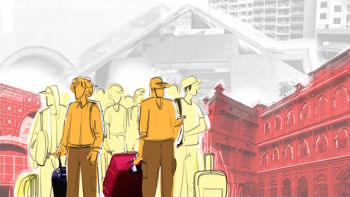Girls are doing great in HSC, but what about the boys?

Female students have been consistently outperforming their male counterparts at secondary and higher secondary levels. This must be a moment of pride for the premier as well as the education minister, under whose watch the academic landscape has evolved, where a reverse gender gap is now visible. The matter did not escape the notice of the prime minister when she launched the online portal for HSC results last week. In her characteristic jovial manner, she "refrained" from commenting, saying that she does not want to say anything that'd hurt the boys, but they should study well to catch up.
The data is indisputable. Of the 13,74,488 students who took the HSC and its equivalent exams this year (698,135 boys and 676,353 girls), 80.75 percent of girls passed the exams against 76.76 percent of boys. A total of 41,804 girls bagged the highest GPA of 5 against 36,717 boys. Girls have remained ahead of boys in the HSC exam pass rates for years, and for the third consecutive year, they have outperformed boys in achieving GPA 5. There was parity only during the "autopass" year in 2020, when both gender groups attained the 100 percent pass mark.
We need to applaud the success of our female students as it challenges traditional gender stereotypes by fostering an environment where merit is recognised irrespective of gender. The influx of overachieving girls will help us address some of the disparities in political empowerment, economic participation, health and survival indexes. However, putting aside the fanfare, the fact that boys are lagging behind girls in most of the school examinations as well as madrasas needs to be scrutinised carefully.
Before giving a conclusion on the new gender gap, let's examine some of the available data to understand the situation at hand.
According to World Bank 2017 data, 74.3 percent of girls and 59.7 percent of boys completed lower secondary schooling in Bangladesh. This 14.7 percent gap is larger than the 2.8 percent gap in the South Asia aggregate. The positive trend of lower secondary education completion is still behind the benchmarks attained by the other lower-income countries. Meanwhile, the seemingly full parity in enrolment in secondary education, literacy rate, and enrolment in tertiary education often hides a persistent gap.
According to the Bangladesh Bureau of Educational Information and Statistics (Banbeis), in the last five years, the rate of female participation grew to reach 54.67 percent in secondary education and 51.89 percent in higher secondary education. During the same period, female participation dropped to 36.30 percent at the university level. The Global Gender Gap Report 2023 thus ranks Bangladesh first in eliminating the gender gap in secondary education enrolment; however, the country is ranked 116th in tertiary education.
The higher the women go, the more barriers they face. Participation in the labour force is a case in point, where 37.7 percent of women are engaged in the labour market against 80.6 percent of males in 2022. At 43.8 percent parity, Bangladesh's "economic participation and opportunity" performance is one of the lowest globally (139th).
The failure to build on the early success of female students in their later careers has been a concern for many researchers. Gender prejudice, social pressure, early marriage, workplace safety, and wage gaps are often considered the barriers that prevent women from replicating their academic success. Although our position in terms of gender parity remains the highest among our neighbours, we are still way behind global benchmarks. Even though we rank seventh globally on political empowerment (55.2 percent parity), in terms of overall gender parity, we currently rank 59th globally, with a rate of 72.2 percent. The world has not failed to notice that we have had a woman head of state for almost three decades out of the last 50—the longest duration in the world—but the shares of women in ministerial (10 percent) and parliamentary positions (20.9 percent) are relatively low.
On Women's Day this year, The Daily Star published a report on "Gender-Based Employment and Wage" and stated that the percentage of female officials in public administration was 19.62 percent, while it was 22.64 percent in field administration. Out of 6,310 posts of senior secretary/secretary, additional secretary, joint secretary, deputy secretary, senior assistant secretary, and assistant secretary under the public administration ministry, the number of male officials is 5,072, while that of women is just 1,238.
The glass ceiling argument would suggest that the supposed reverse gender gap has not truly resulted in any disadvantage to boys in the long run. The wage gap still persists, with women earning less than men. Men still run all of the large businesses and offices. And women are under-represented at all levels of government.
The success of female students may seem like a positive development. In the long run, however, it can have negative consequences. For the sake of our sustainable future, we need to have a comprehensive study on the reverse gender gap before it exudes negativity. We want our boys and girls to perform equally well—not only in school but also in life.
Dr Shamsad Mortuza is professor of English at Dhaka University.
Views expressed in this article are the author's own.
Follow The Daily Star Opinion on Facebook for the latest opinions, commentaries and analyses by experts and professionals. To contribute your article or letter to The Daily Star Opinion, see our guidelines for submission.

 For all latest news, follow The Daily Star's Google News channel.
For all latest news, follow The Daily Star's Google News channel. 









Comments